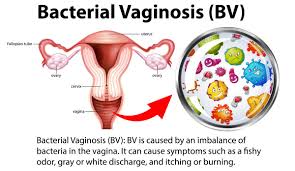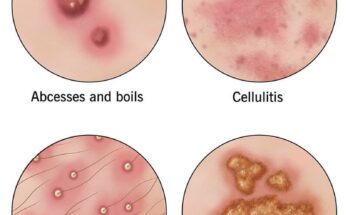Bacterial Vaginosis (BV) is one of the most common vaginal infections among women of reproductive age. It occurs when there is an imbalance in the natural bacteria that live in the vagina. This disruption often leads to an overgrowth of certain bacteria, causing symptoms such as unusual discharge, odor, and discomfort. Although it is not considered a sexually transmitted infection (STI), BV is more likely to occur in women who are sexually active.
Overview
What is Bacterial Vaginosis?

Bacterial Vaginosis is a condition where the balance of bacteria in the vagina is disturbed. Normally, the vagina contains a variety of bacteria, including Lactobacilli, which help maintain an acidic environment. When this balance is upset, it allows harmful bacteria, such as Gardnerella vaginalis, to overgrow, leading to the symptoms associated with BV.
While BV is not an STI, it can increase the risk of other infections, including STIs like HIV, and can also cause complications during pregnancy, such as preterm birth and low birth weight.
Who can get BV?
Bacterial vaginosis (BV) can affect any woman with a vagina, but there are certain risk factors that make some individuals more susceptible to developing the condition. While it’s not classified as a sexually transmitted infection (STI), certain behaviors and conditions can increase the likelihood of BV. Here’s a look at who can get bacterial vaginosis and the factors that influence its development:
- Women of Reproductive Age
- Sexually Active Women
- Women Who Use Douching
- Women with an IUD (Intrauterine Device)
- Women with a History of Other Vaginal Infections
- Frequent Antibiotic Use
- Women with Poor Immune Function
Symptoms and Causes
Symptoms of Bacterial Vaginosis
The symptoms of BV can range from mild to more severe. Common signs include:
- Abnormal Vaginal Discharge: Thin, grayish-white, or greenish discharge.
- Unpleasant Odor: Often described as a “fishy” odor, especially after sex.
- Itching or Irritation: A mild itching sensation around the vaginal area.
- Burning Sensation: Some women experience a burning feeling while urinating.
It’s important to note that some women may have BV without showing any symptoms. This is why regular gynecological check-ups are vital for maintaining reproductive health.
How do you get bacterial vaginosis (BV)?
Bacterial vaginosis occurs when the normal balance of bacteria in the vagina is disrupted, allowing harmful bacteria to overgrow. The main factors that increase the risk of developing BV include:
- Sexual activity (especially with multiple or new partners)
- Douching or using scented products
- Antibiotic use, which can disrupt the vaginal microbiome
- Hormonal changes (e.g., pregnancy, menopause)
- Use of an IUD
- Smoking
- Weakened immune function or certain health conditions (like diabetes)
- Vaginal irritation or injury
Is bacterial vaginosis contagious?
Bacterial vaginosis (BV) is not considered contagious in the same way that sexually transmitted infections (STIs) like chlamydia or gonorrhea are. BV is caused by an imbalance in the natural bacteria that live in the vagina, rather than by a single infectious agent. This means that BV cannot be spread directly from person to person in the same way an STI can.
However, there are certain factors that can increase the risk of developing BV, and sexual activity is one of them. While BV itself is not contagious, certain behaviors, such as sexual contact, can increase the likelihood of developing the condition, especially if there is an introduction of new bacteria into the vaginal environment.
What’s the difference between bacterial vaginosis and a yeast infection?
Bacterial vaginosis and yeast infections (candidiasis) are often confused due to their similar symptoms, but they are caused by different factors. Here are some key differences:
| Feature | Bacterial Vaginosis (BV) | Yeast Infection (Candidiasis) |
|---|---|---|
| Cause | Imbalance of bacteria, particularly an overgrowth of Gardnerella vaginalis and other anaerobes. | Overgrowth of Candida albicans fungus. |
| Discharge | Thin, grayish, or greenish with a fishy odor. | Thick, white, and clumpy, resembling cottage cheese. |
| Odor | Fishy, especially after sex. | Generally no odor, or a mild yeasty smell. |
| Itching | Mild itching, often less pronounced. | Intense itching and irritation in the vulvar area. |
| Pain with Urination | May cause a mild burning sensation. | Burning sensation while urinating is common. |
| Vaginal pH | Above 4.5, more alkaline. | Usually normal (around 4.0-4.5). |
Because the symptoms overlap, it’s essential to get a proper diagnosis from a healthcare professional.
Diagnosis and Tests
A healthcare provider can diagnose BV through a combination of a pelvic exam, medical history review, and laboratory tests. The key diagnostic steps typically include:
- Visual Exam: A gynecologist may inspect the vaginal area for signs of infection, such as abnormal discharge or odor.
- Microscopic Exam: A sample of vaginal discharge is taken to examine under a microscope. The presence of “clue cells” (vaginal cells covered with bacteria) is a strong indicator of BV.
- pH Test: The vaginal pH is measured. A pH higher than 4.5 is often seen in BV.
- Whiff Test: A sample of vaginal fluid is mixed with a potassium hydroxide solution. A strong fishy odor that emerges confirms the presence of BV.
Management and Treatment
Stem Cell Therapy for Bacterial Vaginosis
Although BV is often treatable with antibiotics such as metronidazole or clindamycin, these treatments sometimes fail or cause recurrent infections. Moreover, antibiotics can disrupt the vaginal microbiome, potentially leading to further imbalances. This has led to increased interest in innovative therapies, particularly stem cell treatments, which aim to restore the natural balance of bacteria in the vagina.
Stem cell therapy for BV involves using stem cells to regenerate healthy tissue and potentially rebalance the vaginal microbiota. This type of therapy is still in the experimental phase, but early research shows promising results. Stem cells can stimulate the growth of healthy cells in the vaginal mucosa, potentially boosting the body’s ability to maintain a balanced, healthy microbiome.
Stem Cell Treatment for Bacterial Vaginosis
Two emerging treatments that incorporate stem cell technology for the management of BV are Spidex19 and Faforon. Both of these therapies are designed to address the root cause of BV—an imbalance in the vaginal microbiome—by using stem cells to promote healing and rejuvenation of the vaginal tissue.
Spidex19

Spidex19 is a novel stem cell treatment that uses a unique formulation of stem cells to regenerate the vaginal lining and restore the balance of healthy bacteria. Early clinical trials have shown that Spidex19 can help restore the natural acidic environment of the vagina and reduce the recurrence of BV. The therapy works by applying stem cells derived from the patient’s own body, which minimizes the risk of rejection or side effects.
Faforon

Faforon is another stem cell-based treatment for BV, specifically designed to repair the vaginal microbiome. This treatment uses stem cells to encourage the regrowth of beneficial bacteria like Lactobacilli, which play a crucial role in maintaining the vaginal environment. By restoring this balance, Faforon helps reduce inflammation and symptoms like odor and irritation. Research on Faforon is ongoing, but the initial results show that it could be a groundbreaking solution for chronic BV sufferers.
Both treatments aim to provide long-term relief by addressing the underlying causes of bacterial vaginosis rather than just alleviating symptoms.
Conclusion
Bacterial Vaginosis is a common but often misunderstood condition that can lead to discomfort and complications if left untreated. With symptoms overlapping those of yeast infections, it’s important to receive a proper diagnosis and tailored treatment. While antibiotics remain the go-to treatment for BV, emerging therapies like stem cell treatments (including Spidex19 and Faforon) offer a promising new approach to managing and potentially curing this condition.
As research in stem cell therapies continues to evolve, it’s exciting to think about the future possibilities for BV treatment. These innovative approaches might not only provide relief but also help in restoring the vaginal microbiome to a healthier state, ultimately preventing recurrence and improving overall reproductive health.
If you are experiencing symptoms of BV or have recurrent infections, speak to your healthcare provider about the latest treatment options, including stem cell therapy.



